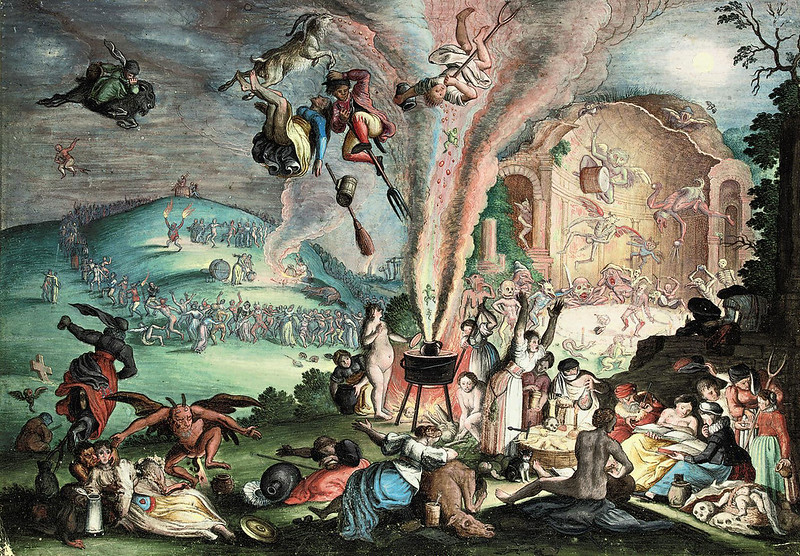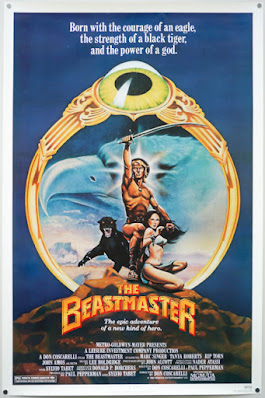The gaming magazine is dead. After all, when was the last time that you were able to purchase a gaming magazine at your nearest newsagent? Games Workshop’s
White Dwarf is of course the exception, but it has been over a decade since Dragon appeared in print. However, in more recent times, the hobby has found other means to bring the magazine format to the market. Digitally, of course, but publishers have also created their own in-house titles and sold them direct or through distribution. Another vehicle has been
Kickststarter.com, which has allowed amateurs to write, create, fund, and publish titles of their own, much like the fanzines of Kickstarter’s
ZineQuest. The resulting titles are not fanzines though, being longer, tackling broader subject matters, and more professional in terms of their layout and design.
—oOo—

From the off,
Knock! #1 grabs the reader’s attention and starts giving him stuff. Flip open the book and, on the front folded flap of the dust jacket, there is the beginning of a dungeon adventure, ‘Zaratazarat’s Manse’. Flip open this front folded flap and it quickly becomes apparent that the dungeon is continued on the inside of the dust jacket, all the way to the dust jacket’s back folded flap on which the dungeon’s maps have been reproduced for easy reference. Flip the actual book over and on the rear, under the dust jacket is a drop table of options to determine the stats and abilities of the baboon-like demon illustrating both the front and back covers of
Knock #1. Even on the title page there is a table, ‘d12 Pamphlets Found In A Dungeon’, and this continues throughout the issue with nary a page wasted and every page filled with something interesting or useful. Leaf through the pages of the magazine and what you have is a panoply of articles and entries—polemics and treatises, ideas and suggestions, rules and rules, treasures, maps and monsters, adventures and Classes, and random tables and tables, followed by random tables in random tables! All of which is jam-packed into a vibrant-looking book.
Knock! #1 An Adventure Gaming Bric-à-Brac was published in January 2021, following a successful
Kickstarter campaign by
The Merry Mushmen. It is a two hundred-and-twelve page 5.9” by 8.25” full colour book containing some eighty-two entries contributed by some of the most influential writers, publishers, and commentators from the Old School Renaissance, including Paolo Greco, Arnold K, Gabor Lux, Bryce Lynch, Fiona Maeve Geist, Chris McDowall, Ben Milton, Gavin Norman, and Daniel Sell, along with artists such as Dyson Logos and Luka Rejec. The content itself is formatted for use with Necrotic Gnome’s
Old School Essentials Classic Fantasy, but readily and easily adapted to the retroclone of the Game Master’s choice. Particular attention should be paid to the look of
Knock! #1, which employs vibrant swathes and blocks of colour to break up and highlight the text, along with strong use of differing fonts and quotations. It is clear though that the graphic style
Knock! #1 has been heavily influenced by the look (though not the tone) of
Mörk Borg, but that is no bad thing as the result is eye-catching and distinctive.
Knock! #1 quickly sets out its stall and identifies what the Old School Renaissance is and what it is not. Brooks Dailey presents ‘What I Want In An OSR Game’, whilst in ‘Old – A comparison of old and new D&D’, Gavin Norman examines why he prefers Old School
Dungeons & Dragons to the new through his play experiences, so elements such as objective, challenged-based gaming, encounter-based high adventure, the lack of specific rules and reliance on the Dungeon Master to make improvised rulings, rather than relying on pre-defined rules, rules where necessary, and the like. What this highlights is the fact that in places,
Knock! #1 does feel as if it is treading old ground, not just that of the Old School Renaissance, but of
Dungeons & Dragons itself. For example, Bryce Lynch’s ‘Wandering Monsters Should Have a Purpose in Wandering Around’ and Sean McCoy’s ‘What Do The Monsters Want?’ both address the issue of monsters being more than mere victims of the Player Characters’ weapons and wizardry, whilst Bryce Lynch’s ‘Better Treasure’ discusses why treasure to be found in many an adventure sucks and suggests ways to make it more interesting. The latter is later supported by ‘300 Useless Magical Loot’, Chris Tamm’s cramped table of magical gewgaws and whatnots. ‘The Danger of Skills’ by Brooks Dailey is very much an Old School Renaissance response to modern
Dungeons & Dragons and its use of skills in that they restrict play by telling a player what his character cannot do as much as what they can, rather going by a series assumptions, such as that the character can cook and can ride.
Also traditional are the articles in
Knock! #1 on dungeon and adventure design, but what is not traditional, is their approach to them, which are theoretical rather than mechanical in nature. Arnold K presents a ‘Dungeon Checklist’ of things which should be in a dungeon, to be read before and after the Dungeon Master has designed her dungeon, whilst Gabor Lux provides two pieces on the subject. The first is ‘The Overly Thematic Dungeon’ which looks at the balance between populating the dungeon in a spirit of almost random, but fantastical whimsy, and does so whilst keeping a sense of fantastic realism in mind. The conclusion is of course, to find a balance which works for you. The second is ‘The Tapestry and the Mosaic Box: On the Scope of Module Design’, which surprisingly, is inspired by my review of
Echoes From Fomalhaut #02: Gont, Nest of Spies in which I criticised his scenarios for a lack of hook to involve the Player Characters. The article does not necessarily change my mind, but it does explain the author’s philosophy and that makes it an interesting response.
Knock! #1 offers plenty of new rules and means of handling various rules and rulings in Old School Renaissance play too. In ‘Does Energy Drain Suck?’ Gabor Lux suggests ways to make the attacks of Wights, Wraiths and other lesser undead more of an immediate and less of a long term effect, whilst Eric Nieudan offers alternative ways in Hit Dice might work in ‘Hit Dice Are Meant to be Rolled’, Vagabundork offers ways to avoid Player Character death in ‘Save vs actual Death?’, and Brooks Dailey gives a new rule system for handling the Class’ skills in ‘1D6 Thieving’ (which oddly follows immediately after his ‘The Danger of Skills’ article). Add to all of this are the numerous tables to be found in the pages of
Knock! #1. Daniel Sell’s ‘Wizard Weaknesses’ adds multiple secrets to winkle out and undermine a wizard’s magical prowess, whilst his ‘ The village’s local retired adventurer...’ quickly generates a background for that hoary old veteran nursing a pint in the corner of the local tavern. Good-deal Nobboc’s ‘Get your gear!’ provides d66’s worth of starting equipment, Eric Nieudan suggests ‘20 Gunpowders’, Jack Shear asks, ‘What’s the Deal with Igor’s Hump?’ (complete with a picture of Marty Feldman), and Fiona Maeve Geist explains that ‘My Goblins Are…’ in a set of tables which create goblins as more fey creatures, mundane and unnatural, but always with something interesting in their pockets. Chris Tamm also provides a complete set of sewer geomorphs and tables in ‘Sewers of Mistery’ to provide an adventuring environment close to home, under the town or city the adventurers are currently in. It also nicely ties in with James Holloway’s ‘My Aesthetic is PATHETIC And Yours Can Be Too.’ which explores the humble, grubby, and dangerous style of play British fantasy roleplaying and also the Character Funnel of
Dungeon Crawl Classics Role Playing Game fame.
Elsewhere
Knock! #1 explores some interesting issues and issues from interesting angles. With ‘What Kids’ RPGs are Missing’, Ben Milton analyses a playthrough of roleplaying games designed for play by kids, before suggesting that perhaps the high-risk, high-reward structure would be more to their liking, whilst in ‘The Labors of Hercules as OSR Obstacles’ suggests ways in which each of the twelve tasks might work in Old School
Dungeons & Dragons-style games. It is not so much mechanical as much looking whether Hercules’ solutions might be the sort of thing players would come up with. Interesting, nevertheless. One of the criticisms of
B2 Keep on the Borderlands is that it lacks names for its NPCs, but Nicolas Dessaux uses that as a starting point to apply anthropology, archaeology, geography, and other fields of study to actually find a place for the eponymous keep and explain its various features. It does get close to being dangerously realistic, but it is a fascinating examination of the module from outside of the hobby.
Knock! #1 showcases a range of maps before presenting the more mechanical content—the type of content you would perhaps expect in an Old School Renaissance fanzine—in the last quarter of the issue. The section includes new Classes such as the Living Harness, a living suit of armour once worn by a hero who died on a dark and moonless night and the Ne’er-do-well, lazy vagabonds and the like, rogue-ish, but not thieves, and very,
very Vancian, both by Nobboc. None of the six classes are very serious, or even serious at all, and to a certain extent, the same can be said the monsters in the issue, such as Eric Nieudan’s ‘Thurible Cat’, a cast iron in the shape of a portly feline deity which must be fuelled with coal and incense and guards temples and which is actually based on a tea infuser! Lastly,
Knock! #1 concludes with three adventures. ‘Citadel of Evil’ is for Player Characters of First to Third Level and is by Stuart Robertson, and sees them enter a mountain and ascend inside it in order to rescue kidnapped villagers. It is more serviceable and linear than interesting. Graphite Prime’s ‘Praise the Fallen’ is more interesting, a race against time for Player Characters of Second to Fourth Level to cultists from resurrecting a Fallen Angel—an angel of chaos—and whilst relatively small presents more of a challenge and a theme. Chris Tamm presents a wizard’s lair in the ‘The Wizard Cave’, which is more of a location for the Game Master to add to her campaign rather than actual adventure. The other adventure, ‘Zaratazarat’s Manse’ is for Player Characters of First and Second Level and has something strange going on in the swamps around a mouldering village. Could it have something to do with a wizard who lives in a hill in the swamp? Of course, it does, but the adventure nicely makes use of random monsters and gives a solid explanation for their appearance.
Physically,
Knock! #1 is impressively bright and breezy. The layout is a little cluttered in places and the text a little too busy, but on the whole, it looks good. It needs an edit in places, but the artwork is good and the cartography excellent, but then with
Knock! #1 coming out of the Old School Renaissance, it would be remiss if the cartography was anything else.
Subtitled ‘Being A Compendium of Miscellanea for Old School RPGs’, the truth of the matter is that much of the contents of
Knock! #1 is far from new. A great number of the longer essays originated as blog posts, so there is a sense of some of the entries being yesterday’s comments and ideas. Much of what they say is still applicable to the Old School Renaissance segment of the hobby today, just as when they were originally posted, and in some cases, when they were explored and examined back in the ‘Golden Age’ of roleplaying that the Old School Renaissance actually draws from. So, this is not to say that the contents are poor or uninteresting or not useful, but rather that having had them published, to ask, “What next?”. As much as
Knock! #1 is full of interesting, thoughtful, and useful stuff, should subsequent issues be relying quite so much on blogposts a few years old?
Knock! #1 An Adventure Gaming Bric-à-Brac lives up to both its subtitle and its own description as ‘Being A Compendium of Miscellanea for Old School RPGs.’ It is both a mishmash and an anthology of articles, essays, monsters, tables, adventures, and more—and it works for any retroclone. There is some excellent content in this inaugural issue too, like the ‘Dungeon Checklist’, ‘What Do Monsters Want?’, ‘300 Useless Magic Loot’, and ‘Borderlands’. However, some of the content does feel staid and some of it feels as if it has already been said, but the great thing about not finding one article or entry interesting, is that with over eighty entries in the anthology, all the reader has to do, is flip the page and the chances are that the next entry will be more to his liking. Ultimately, not only an excellent addition to the shelf of any Old School Renaissance Game Master, but in bringing to print a bundle of blogposts,
Knock! #1 An Adventure Gaming Bric-à-Brac captures what the Old School Renaissance is like in terms of its aims and its ideas in 2020.
 Name: Full Fathom Five
Name: Full Fathom Five























